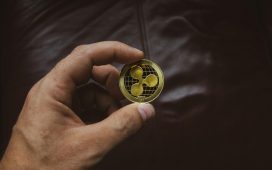Shoppers increasingly turned to supermarkets’ cheapest own-label products as grocery inflation remained above 17% over the past month, keeping the pressure on already strained household finances.
Sales of the very cheapest value own-label lines jumped 46% in the four weeks to 16 April, compared with a year earlier, dropping in to nearly one in five baskets as consumers sought to make savings.
The rate of supermarket inflation dipped slightly to 17.3% over the period from 17.5% a month earlier, according to the data from Kantar, but the industry analysts said it was too early to say grocery inflation had peaked.
“The latest drop in grocery price inflation will be welcome news for shoppers but it’s too early to call the top,” Fraser McKevitt, the head of retail and consumer insight at Kantar, said. “We’ve been here before when the rate fell at the end of 2022, only for it to rise again over the first quarter of this year.
“We think grocery inflation will come down soon, but that’s because we’ll start to measure it against the high rates seen last year. It’s important to remember, of course, that falling grocery inflation doesn’t mean lower prices, it just means prices aren’t increasing as quickly.”
Several supermarket bosses have said they expect inflation to ease by the second half of the year as freight and energy costs have eased – although some commodities continue to rise in price.
Households are trying to offset inflation by turning to supermarkets’ own-label products and visiting discounters such as Aldi and Lidl.
The 46% rise for supermarkets’ cheapest value own-label lines was higher than the 13.5% rise in total own-label products and a 4.4% rise in sales of branded items. The figures suggest that the number of branded items sold has fallen back because the value of sales is well behind inflation.
That finding was confirmed on Tuesaday by figures from Nestlé, the owner of KitKat chocolate bars and Purina pet food. The company said underlying sales had risen by 9.3% in the first three months of the year, but that was led by a 9.8% rise in prices, while the volume of items sold fell by 0.5%. Prices in Europe rose by almost 11%, but that was behind North America and Latin America, where prices increased by more than 12%.
after newsletter promotion
Aldi and Lidl reached new record market shares in the 12 weeks to 16 April at 10.1% and 7.6% respectively. Lidl was the fastest-growing grocer with sales increasing by 25.1%, while Aldi was just behind on 25.0%.
McKevitt said: “Consumers are continuing to shop around, visiting at least three major retailers every month on average. The discounters have been big beneficiaries of this, with Aldi going past a 10% market share for the first time this month. That’s up from 5% eight years ago in 2015.”
Shoppers’ efforts to find savings and to make cuts are evident in total grocery market sales growth of 9.4%, well behind inflation, according to Kantar.











